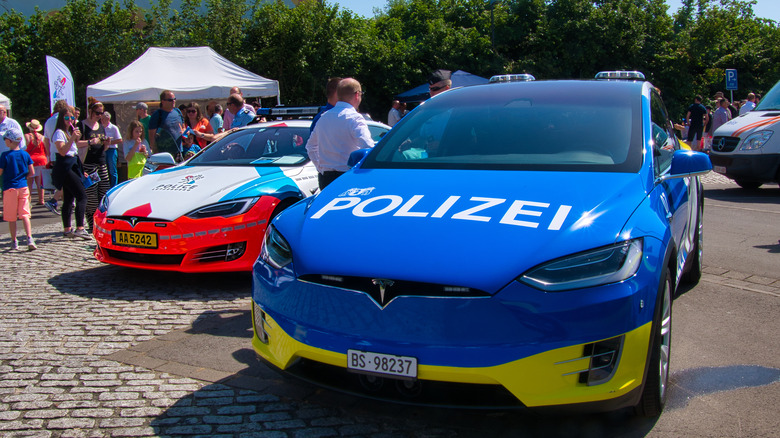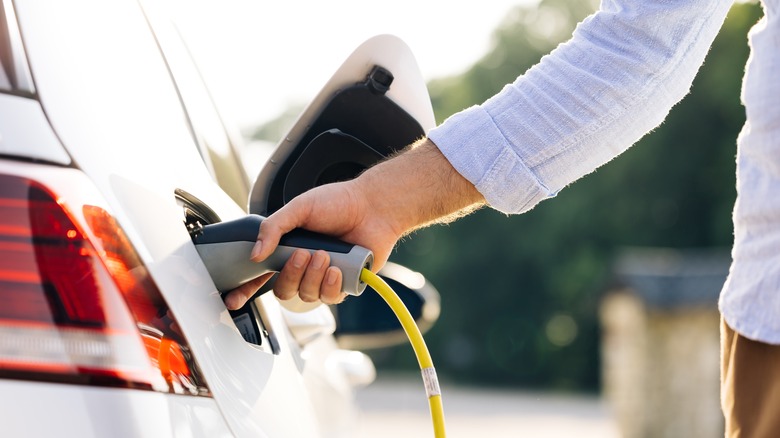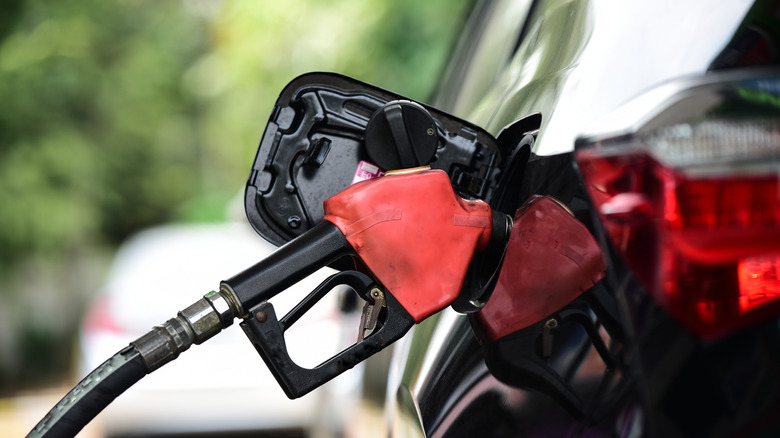Are Teslas The Ideal Choice For Police Departments? The Pros And Cons
Police departments across the United States serve a rich and diverse community of individuals. Officers are faced with a uniquely demanding job that combines the needs of an acute mental focus with a toolset that's outfitted with strategies for success, equipment both lethal and non-lethal, and of course vehicles. Police departments are now considering a changeover in this last category to include electric vehicles in their fleets. The South Pasadena Police Department, for instance, announced on May 8, 2023 (and reported by The Pasadena Star-News) that it would be converting its entire fleet to EVs, starting with a plan to purchase 10 Tesla Model Ys. This acquisition comes off the heels of a September 2022 vote to replace the city's fleet that was deemed to be too old for continued, effective service to the community.
This decision will certainly set off discussions all over the country about whether EVs are right for other departments, too. There are some significant advantages to adding Teslas or other EVs to the vehicle pool, but EVs aren't the right choice for every public safety organization. There remain some limitations in the platform itself when compared to traditional ICE models. Because of the unique use case that police vehicles must serve, a switch may not always be beneficial.
Charging can be relatively quick, but may be a wash for some departments
The charging time required to return an EV with a depleted battery to the field is often fairly quick. With a Level 240 Volt 2 charger running on DC power, a battery can be returned to around 80% in less than half an hour. But this assumes that a department thinking of making the switch to an electrified fleet has access to this type of fast-charging infrastructure or is planning to install it. Similarly, community resources can support charging requirements, but the same concerns over existing resources or imminent installation plans remain. Not every location will be able to support the charging needs of the police force, and others won't have the budget to purchase both new vehicles and the requisite equipment to keep them in the field without lengthy charging stops.
On another level, Teslas, or any other EVs as a primary vehicle in the fleet of a police force may be hindered by the typical usage of officers. EV batteries can offer lengthy ranges, but for those who patrol hundreds of miles at a time or routinely engage in quick acceleration to chase down traffic violators (like State Troopers), it still may not be enough to cover the demands of the job. The main issue here is that officers should never be caught in a pursuit with a low tank (or battery) and strict refueling guidelines are therefore mandated by departments across the country. A necessary return to the station to recharge the patrol car's battery midway through an officer's shift is probably not feasible. Unsurprisingly, EV adoption may be immensely beneficial to some and a definite no-go for others.
Fuel savings can add up to an immense dollar figure
Perhaps the most enticing feature that will sway police departments across the United States to make the switch is the potential savings in fuel costs. EVs are well-known to save drivers a tremendous amount over the course of their life in service. Estimates place the break-even point for a new electric car at just 21,300 miles when it comes to emissions and a fuel cost figure of roughly four years of use when driving a Tesla Model Y Long Range. However, calculating these numbers in accordance with police usage rather than that of the typical consumer might change the math a bit. For instance, Chief Todd Bertram of the Bargersville Police Department in Indiana told Community Policing Dispatch that his department saves as much as $6,700 per year in fuel expenses for each of the five EV patrol cars deployed by the force for a total of up to $33,500, to say nothing of the lower maintenance costs seen in the EVs. To put this in perspective, that savings is a little more than half the salary of the median earner on an American police force.
Hot seating can make EVs an ineffective tool
Another factor that comes into play when considering the electrification of a police fleet is the current structure of patrol car usage. Departments that are already stretched thin on resources might consider adding a few new vehicles, but EVs simply cannot keep up with the demands of a practice known as "hot seating." Police forces that maintain a smaller fleet of vehicles need to share cars, with officers handing over their vehicles to their colleagues at each shift change. Hot seat vehicles are on duty non-stop and therefore must be refueled quickly, and while in use.
However, it should be noted that most police forces don't utilize the hot seat method for allocating their cars to officers. This is often a last-ditch effort to make ends meet if there isn't enough room in the budget to replace vehicles that are aging out of effectiveness or in other, similar situations. Even so, a police department that has resorted to overlapping use in any form may lose significant mobility by deploying EVs that need time off the clock to charge on a regular basis.
The environmental impact of an all-EV fleet is immense
The total combined fleet of American patrol cars is somewhere between 250,000 and 300,000 strong. In the same way that a phase-out of traditional power in long-haul trucking can make a monumental impact (with 20% of all U.S. vehicle emissions coming from semis), retiring hundreds of thousands of gas-guzzling police vehicles in favor of an electrified fleet would revolutionize the United States' approach to minimizing emissions and improving the global environment that we all share.
There's no debate here, with every vehicle that's replaced by an electric model, the local community benefits from cleaner air, a reduction in oil dependence, and much more. Indeed, it would appear likely that a future of all-electric police vehicles lies somewhere ahead of the present given the federal push to see EVs account for at least half the new car marketplace by 2030, install billions of dollars in charging infrastructure, and cut emissions to net-zero by 2050. A shift to EV police fleets will be immensely beneficial to the communities that those departments serve, but an important analysis remains for any force thinking of making this change sooner rather than later.




